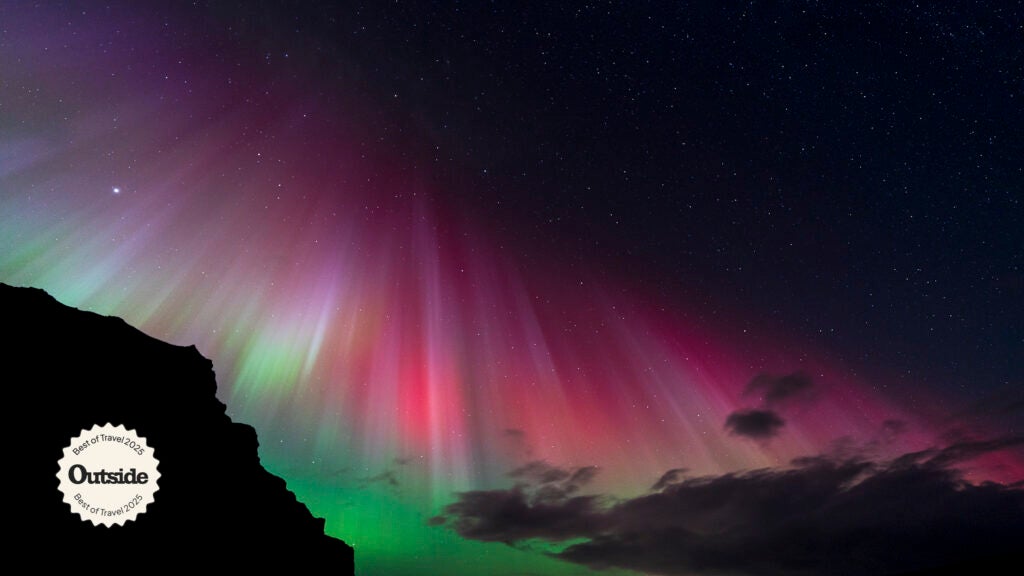Last year brought a trove of breathtaking astronomical events that delighted stargazers worldwide. With stunning low-latitude auroras, a total solar eclipse, and a bright comet gracing the night sky, it’s no wonder astronomy enthusiasts felt invigorated. As we look ahead to 2025, the excitement continues with a lineup of celestial wonders, promising even more spectacular sightings for North Americans.
Exciting Astronomical Events Await in 2025
This upcoming year is set to be a bonanza for those passionate about astronomy. From planet parades to lunar eclipses, each season offers unique opportunities to observe the night sky. Kicking off the year, the much-anticipated planet parade is currently ongoing and will continue through late February. Following this excitement, a significant total lunar eclipse will grace the sky in mid-March.
Solar Maximum: A Prime Time for Aurora Chasers
2025 is particularly thrilling for aurora chasers, as the sun has entered its solar maximum phase, leading to heightened activity of both northern and southern lights. This phenomenon occurs approximately every 11 years, and NASA has indicated that this surge in auroras might persist until fall 2025 and possibly into 2026. As such, now is the optimum moment to plan trips to prime aurora-viewing destinations.
Key Astronomical Highlights of 2025
As we dive into the events to mark on your calendars, February ushers in the start of prime Milky Way season. Although the galactic core can be perceived year-round under dark skies, its visibility improves notably as Earth’s position alters. This month, the radiant core reappears in the southeastern sky in the early hours, making it a fantastic time for photography enthusiasts to capture this celestial masterpiece.
Lunar Eclipses and Meteor Showers
Mark your calendars for March 13-14, 2025, when a total lunar eclipse will captivate onlookers across North America. Observers can expect to see the moon bathed in a haunting tangerine glow, often referred to as a “blood moon.” Then, in August, the Perseid meteor shower will reach its peak, showcasing up to 100 meteors per hour—though this year’s full moon may obscure some of the fainter streaks.
Experience the Grand Canyon Star Party
For a truly immersive experience, consider attending the annual Grand Canyon Star Party from June 21-28. This event, hosted in the renowned DarkSky-certified Grand Canyon National Park, brings together stargazers and astronomers for workshops and telescope sessions. It’s an exquisite opportunity to observe celestial phenomena such as star clusters, nebulae, and even galaxies with the guidance of local experts.
Engaging in Year-End Meteor Displays
The celestial spectacle doesn’t end there. The Geminid meteor shower peaks between December 13 and 14, promising up to 150 meteors per hour under pristine viewing conditions. With the waning crescent moon rising late, this year offers several hours of pristine visibility. Unlocking the best experience involves traveling to a DarkSky-certified location, enhancing your odds of witnessing this stunning display.
Enhancing Your Stargazing Experience
For ultimate enjoyment in your stargazing adventure, consider these tips: download a stargazing app such as SkySafari or Stellarium. Using red light instead of white to preserve your night vision and familiarizing yourself with your stargazing location during the day can also significantly enhance your experience. For those keen on photography, smartphones can capture remarkable images of the night sky, making them invaluable for amateur astronomers.
As 2025 unfolds, it’s poised to be a breathtaking year for stargazers and astronomy enthusiasts alike. Whether seeking the enchanting auroras, asteroids, or simply basking in the magic of the night sky, there’s no shortage of celestial wonders waiting to be explored.
